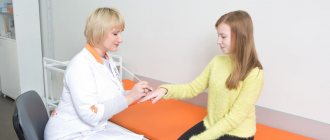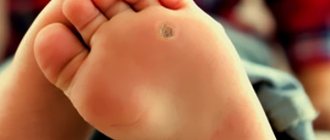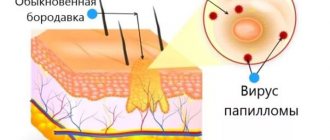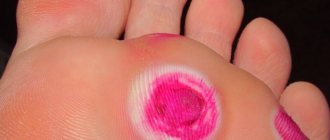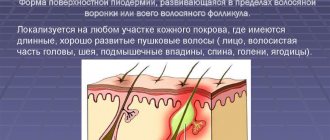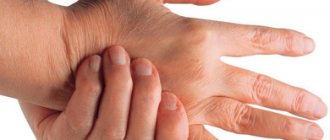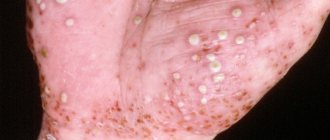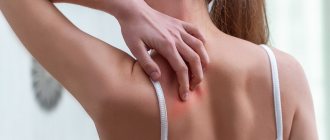Medicines that may cause a reaction
Hand-foot syndrome
The following medications may cause hand-foot syndrome.
- capecitabine (Xeloda®);
- Doxorubicin (Adriamycin®)
- Fluorouracil (5-FU®)
- Liposomal doxorubicin (Doxil®)
- Cytarabine (Cytosar-U®)
Palmoplantar skin reaction
The following medications may cause hand-foot reaction.
- Sorafenib (Nexavar®)
- Sunitinib (Sutent®)
- Cabozantinib (Cometriq®)
- Regorafenib (Stivarga®)
- Axitinib (Inlyta®)
- Pazopanib (Votrient®)
- Vandetanib (Caprelsa®)
- Vemurafenib (Zelboraf®)
- Dabrafenib (Tafinlar®)
to come back to the beginning
Symptoms
Symptoms of hand-foot syndrome and hand-foot skin reaction may appear 3 to 6 weeks after starting chemotherapy. Depending on the medicine you are taking, any of the following symptoms may appear on your palms and soles of your feet:
- sharp tingling or burning-like pain, especially in the tips of the fingers and toes;
- dry, cracked, scaly or flaky skin;
- thickened skin that looks like a callus;
- mild or pronounced redness;
- swelling.
- blisters;
Symptoms of palmoplantar skin reaction usually appear on parts of the body that are subject to a lot of pressure, such as the balls of the toes, between the toes, and the sides of the feet.
Symptoms of hand-foot syndrome and hand-foot skin reaction can range from mild discomfort to a painful sensation that can prevent you from doing normal activities. You may have difficulty grasping small objects such as a pen or fork. It may be difficult to fasten buttons on clothes. Some people have difficulty walking.
Symptoms usually go away when the dose of chemotherapy is reduced or when the course of treatment is completed. The skin begins to recover after a few weeks.
to come back to the beginning
Features of clinical manifestations and therapy of patients with pustular psoriasis
Currently, psoriasis is one of the most severe dermatoses that requires great effort in treatment. This is due not only to the prevalence of the disease (3–5% of dermatological patients and 1% of the world population). The urgency of the problem is also due to the presence of severe forms - psoriatic arthritis and psoriatic erythroderma. Psoriasis is a social problem, as it leads to significant loss of ability to work (due to sick leave or disability) in young people, more often in men, and also worsens the quality of life of patients.
Severe forms of psoriasis also include pustular psoriasis (PP) (Fig.). It is not so common, but causes severe general symptoms, forcing intensive therapy, and is characterized by a persistent course, often torpid in relation to the treatment.
| Rice. PP classification |
There are two types of PP: generalized pustular psoriasis of Zumbusch and localized psoriasis of the palms and soles of Barber. Another type of PP has also been described - ring-shaped (annular, cincinar), occurring subacutely or chronically. In patients with this diagnosis, the process is usually limited to skin manifestations without general symptoms. The less common type is juvenile or infantile, which occurs in children. In accordance with the classification of GPP proposed by L.N. Mashkilleyson [1], two forms of the disease are distinguished - severe and mild. Some authors use the term “psoriasis with pustulization” [2]. Obviously, they mean a mild form of pustular psoriasis, in which pustules appear secondarily.
Pustular dermatoses:
- generalized pustular psoriasis (GPP);
- localized psoriasis of the palms and soles of Barber (PPB);
- chronic acrodermatitis Allopo;
- impetigo herpetiformis Hebra (IH);
- pustular bacterid Endus;
- subcorneal pustulosis;
- diseases with various clinical manifestations, including pustules.
GPP was described in 1909 by the Munich dermatologist Zumbusch as purulent scaly pityriasis (psoriasis suppurativa). Considers a case of illness of a brother and sister: while in the first case pustular rashes appeared periodically on plaques of ordinary psoriasis, including when using irritating ointments, in the sister an acute attack suddenly took on a pustular character, and the patient died.
PP is not widespread. Affects persons of all races. It occurs with equal frequency in both men and women. Among children, it most often affects boys. The average age of adult patients is 50 years; children from 2 to 10 years old can be affected [3]. According to a 2005 French epidemiological study, the prevalence of HPP was 0.64/million in the general population [4]. According to our observations, the number of patients with PP has recently increased.
Factors provoking the transition of vulgar psoriasis to GPP:
- Taking systemic corticosteroids, administered orally or parenterally, and their abrupt withdrawal.
- Taking cytotoxic drugs, such as methotrexate.
- Taking various medications: salicylates, antipyretics, antidepressants, non-steroidal anti-inflammatory drugs (phenylbutazone or oxyphenbutazone), penicillin antibiotics, the antimalarial drug hydroxychloroquine, a vitamin D derivative - calcipotriol, injections of recombinant interferons alpha and beta, chemotherapy drugs, the use of Novocaine, sodium thiosulfate , Diazolin, anabolic steroids, progesterone, beta blockers, oral contraceptives.
- Powerful irritating external agents (tar, anthralin), corticosteroids used with an occlusive dressing, zinc pyrithione preparations in shampoos, as well as the use of Fukortsin, Salicylic ointment.
- Stressful situations.
- Infections (both viral and bacterial).
- Pregnancy, hormonal dysfunction.
- Sunlight and phototherapy.
- Cholestatic jaundice (yellow discoloration of the skin and sclera caused by stagnation of bile).
- Hypocalcemia (extremely low levels of calcium in the blood).
However, in many cases it is not possible to identify a predisposing factor [3].
Generalized pustular psoriasis is a severe, often life-threatening form of psoriasis. It starts suddenly. Within a few hours, a bright, fiery red erythema develops, which covers large areas of the skin, up to the state of erythroderma. The skin becomes extremely sensitive. Against its background, small grouped superficial pustules appear, their number increases, they merge to form “purulent lakes.” Purulent elements can appear both on unaffected skin and on foci of psoriasis in patients who previously suffered from psoriasis or in healthy people.
Adults are more likely to get sick, children suffer very rarely. Patients complain of malaise, fever, and the temperature can reach hectic levels. Their general condition suffers - increasing weakness, headaches, arthralgia and myalgia, nausea, pain in the affected areas. “Pus lakes” can quickly turn into lesions covered with crusts, after which fall off, revealing succulent, eroded surfaces. Erosions quickly epithelialize. Pustules can appear in waves over a period of 1 week to 2 months; as some elements dry out, others appear in adjacent areas. Once the pustules disappear, most other symptoms, such as headache and fever, usually subside. Bright erythema and manifestations of normal psoriasis may persist on the skin [3].
The most common localization of pustules is the anal and genital area, the skin of the flexor surface of the joints and folds, the rashes in which are especially painful. Sometimes pustules can appear on the face and even on the tongue, causing difficulty in eating [3]. They can also be located under the nails and lead to onycholysis. In rare cases, telogen effluvium hair loss may develop 2–3 months after the onset of the disease.
Another type of PP is a lesion of the skin of the palms and soles, characterized by the appearance of pustules - Barber pustular psoriasis (PPP) . As a rule, the lesion is limited to the skin of the palmar surface of the hands and soles. The etiology and pathogenesis of this form of psoriasis, like vulgar psoriasis, have not been established. Women are more often affected, while psoriasis vulgaris more often affects men. On a scaly erythematous background with sharp boundaries, there are pustules, which, unlike GPP, are located deep in the epidermis, which is due to the morphological structure of the skin of the palms and soles. The size of the pustules reaches 2–5 mm, their contents are yellow. On the palms and soles or only on the palms or only on the soles they are located mainly in the thenar, hypothenar areas, on the flexor surface of the fingers, arch of the foot, and heel. The fingertips are usually not affected. The disease lasts for years, with off-season exacerbations followed by remissions. Occasionally, lesions of ordinary psoriasis appear, but more often the rash remains localized.
The differential diagnosis excludes fungal infection, eczema, and Andrews pustular bacterium. The latter is also characterized by recurrent pustular rashes on the skin of the palms and soles, located symmetrically, mainly in the central part of the palms and in the arch of the feet. Initially, they are located in isolation, against the background of healthy skin, some are surrounded by an erythematous rim. The cause of pustular bacteridus is considered to be an exacerbation of foci of chronic infection, especially tonsillitis. After the last debridement, the rash usually regresses.
The ring-shaped type of PP is most common in young children. It occurs subacutely or chronically. Its symptoms are characterized by a less severe severity of the process. Ring-shaped plaques appear (with pronounced infiltration), which often recur. Pustules may appear along the edges of the rings. They are mainly localized on the trunk, but can also occur on the extremities, with a ring of pustules growing along the periphery and resolving in the center. Other symptoms are absent or mild [3]. The prognosis is more favorable in children [5].
The juvenile or infantile type of PP is usually mild. General symptoms are not expressed. The process resolves spontaneously [3].
In addition to GPP, there are a number of severe pustular dermatoses, such as impetigo herpetiformis Hebra (IH) and persistent pustular acrodermatitis of Allopeau , which in the past were considered by a number of authors to be independent diseases [6], and are now considered as variants of pustular psoriasis [2, 3, 7].
Apparently, IHH is a peculiar manifestation of PP in pregnant women, accompanied by hypoparathyroidism and calcium deficiency in the blood. It can cause spontaneous miscarriage or fetal death. We have been observing a patient for a long period with typical manifestations of IHH during two pregnancies. Clinical remission lasted about 20 years. In the menopausal period, the disease recurs many times, the rashes have a pattern of HPP, but without a temperature reaction and a milder course with manifestations of psoriatic arthritis and the absence of typical psoriatic plaques. Relapses of the disease are stopped by the use of Neotigazon.
Complications of pustular psoriasis include:
- pyoderma, alopecia, onycholysis;
- hypoalbuminemia;
- hypocalcemia;
- necrosis of renal tubules during oligemia;
- liver failure due to oligemia and general intoxication;
- malabsorption.
GPP (with fever and intoxication) without adequate treatment can cause death in the acute phase of the disease due to the development of heart and pulmonary failure. Older patients with HPP have a more severe prognosis. In extremely rare cases, the situation is complicated by acute respiratory distress syndrome [3].
Complications occur in 17% and deaths occur in 2% of cases of HPP [4].
The histological picture of PP is characteristic and has the following features: spongiophoma pustules appear in the epidermis, which is explained by the migration of neutrophils from the capillaries of the papillary dermis to the spinous layer of the epidermis.
Massive infiltration of the epidermis by neutrophils plays a pathogenetic role in the formation of PP foci. Neutrophils release cytokines and other inflammatory mediators, as well as enzymes and reactive oxygen species, which support the inflammatory response and lead to necrosis of keratinocytes and immune cells (eg, T lymphocytes).
This inflammatory process causes the formation of large cavities in the epidermis filled with sterile purulent contents, which are morphologically assessed as Kogoya pustules.
Sowing the contents of the pustules does not allow the growth of microorganisms, i.e. they are sterile. In a general blood test, leukocytosis, neutrophilia up to 20%, lymphopenia with polymorphonuclear leukocytosis, and accelerated ESR are observed. A biochemical blood test shows an increase in globulins and a decrease in albumin, calcium and zinc. Also, in case of hypovolemia, blood urea nitrogen and creatinine may be increased [3].
According to recent studies, the number of eosinophils in the blood and skin is increased in patients with HPP. This indicates a significant role of these cells in the pathogenesis of pustular psoriasis [8].
Histological examination of fresh lesions reveals parakeratosis, pronounced Munro microabscesses, local formation of spongioform pustules, superficial and deep polymorphic infiltrates in the dermis containing multiple polymorphonuclear leukocytes, psoriasiform acanthosis and dilation of the vessels of the superficial choroid plexus [3].
The diagnosis is established on the basis of a characteristic clinical picture, histological examination, and culture of the contents of pustules.
The course of GPP is chronically relapsing. Exacerbations and remissions can follow each other. Sometimes PP transforms into ordinary psoriasis and proceeds without pustulization.
Apparently, it is advisable to distinguish PP by severity (mild, moderate, severe) and prevalence (with widespread and limited manifestations). The disease can be generalized and severe, as described above. Along with this, there are mild cases when patients with typical psoriasis suddenly have a fever and a few pustules appear in certain areas (on psoriatic elements or on healthy skin, possibly on both). Even without intensive therapy, only when prescribing dyes and aerosols with corticosteroids and antibiotics, the phenomena regress after 2–3 days. In other cases, it is often necessary to interrupt standard therapy and resume it after the disappearance of pustular elements.
Treatment
It should be emphasized that the main forms described are torpid to the treatment being carried out. In case of PP, which occurs with fever and a violation of the general condition, treatment begins with the administration of detoxification drugs (saline solution, Reamberin), antipyretics; parenteral administration of corticosteroid drugs (doses of prednisolone reach 100–120 mg per day), antihistamines. Often this treatment has no effect, and the fever persists for 7–10 days. According to our experience, the most effective drug is etretinate (Tigazon), a synthetic vitamin A preparation (synthetic retinoid) at a dose of 0.5–1.0 mg per 1 kg of body weight [9–12]. This drug allows you to stabilize the condition and, if necessary, move on to other treatment methods. Its use is an important step in the treatment of many severe dermatoses. In terms of its significance, the discovery of retinoids can be compared with the introduction of corticosteroids, PUVA therapy, immunosuppressive and immunocorrective agents, and cytostatics into the therapy of dermatoses.
Etretinate (Tigazon) according to its chemical structure is an aromatic retinoid, has an aromatic ring and an ester group at the end of the side chain. Currently, specialists have in their arsenal a more effective Neotigazon (acitretin) that causes fewer complications, which belongs to the second generation of retinoids.
The mechanism of action of synthetic retinoids is multifaceted. They affect the pathologically keratinizing epidermis, the immune system, and have antitumor and anti-inflammatory effects. The latter is aimed at inhibiting the migration of neutrophil granulocytes. Etretinate increases humoral and cellular immunity, modulates granulocytes and inflammatory mediators. The positive effect of etretinate has long been known for dermatoses with impaired keratinization (psoriasis, Darier's follicular dyskeratosis, pityriasis versicolor pilaris, ichthyosis and ichthyosiform erythroderma, palmoplantar keratoderma, etc.).
Less well known is the positive and, in some cases, dramatic effects of the drug in patients with HPP. Without canceling detoxification treatment methods, Neotigazon is prescribed at a rate of 0.5–0.7 mg per kg of body weight. The drug is taken in two doses in approximately equal doses with food. After just a few days, the appearance of pustules stops, the old ones dry out, their surface becomes covered with crusts, which quickly fall off. Such doses are used for 10–12 days, after which they are gradually reduced. The total duration of treatment depends on the severity and extent of the process. In cases of moderate severity of the disease, the temperature reaction may weaken for 4–5 days, and then return to normal.
However, not all patients benefit from treatment with etretinate. Sometimes it is necessary to resort to 1-2 injections of a long-acting corticosteroid - Diprospan - with an interval of 7-10 days, although there is evidence of the transition of ordinary psoriasis to pustular psoriasis under the influence of this drug. If there is no effect from the drugs used, methotrexate is prescribed, possibly intravenously at a dose of 25 mg per week.
In the absence of secondary infection, prescribing antibiotics is not advisable. The pustules are calcined with a sterile needle, smeared with aniline dyes, and treated with Polcortolone with tetracycline in aerosol form (Polcortolone TS). In the future, strong corticosteroid creams are used (Dermovate, Celestoderm), and Zinc ointment with 0.5% hydrocortisone is used in the axillary and groin areas. External derivatives of vitamin D3, dithranol, and retinoids are also used. A good effect was noted with the combined use of anthralin and salicylic acid [3]. After the pustules resolve, they switch to treatment with soft agents - hydrophilic creams or non-greasy emulsions. However, unfortunately, dermatologists treating patients on an outpatient basis most often prescribe topical corticosteroids in this case [4], which are ineffective when used as monotherapy with PP. Abroad, there is an external retinoid - tazarotene (Tazorak) in the form of a gel or cream. When used in combination with systemic therapy, it has been proven to accelerate the regression of pustules and their healing, and reduce erythema.
Patients with HPP do not tolerate phototherapy well. PUVA therapy is prescribed after stabilization with etretinate (0.2–0.5 mg/kg for 7 days, then PUVA 3–4 times a week). After the pustules disappear, etretinate should be discontinued. PUVA therapy can be continued for up to 2 months [3]. After the acute phase of the disease subsides, other types of phototherapy can be performed (PUVA baths, long-wave and narrow-band medium-wave phototherapy with a wavelength of 311 nm).
For palmoplantar PP, Re-PUVA therapy (with retinoids) is performed. Acitretin is taken orally in parallel with long-wave ultraviolet irradiation (PUVA therapy, PUVA baths).
Modern therapy for severe psoriasis is based on the use of new therapeutic biotechnologies, so-called biological agents: infliximab (Remicade), etanercept (Enbrel), efalizumab (Raptiva), alefacept (Ameviva) and others. Data on these drugs and their mechanism of action are reflected in domestic and foreign publications, according to which the prescription of biological drugs is required in approximately 13% of patients with GPP [4].
Biological drugs are proteins that perform natural biological functions in the body and have a highly selective mechanism of action.
Infliximab is the most widely used drug in our country. This drug is of genetically engineered origin; it is an IgG1 chimeric monoclonal antibody with affinity and avidity for tumor necrosis factor-alpha (TNF-alpha). Today it is known that the cytokine TNF-alpha plays a leading role in the immunopathogenesis of psoriasis. The drug binds all forms of TNF-alpha - transmembrane, serum and receptor-bound. It provides effective suppression of this key cytokine. According to foreign studies, the use of infliximab for GPP led to a rapid and positive response without any significant side effects, and prevented life-threatening complications of GPP (sepsis, electrolyte disturbances, renal and heart failure). 24 hours after the first injection of the drug, a decrease in the level of ESR, the number of leukocytes, C-reactive protein, an improvement in the main indicators of the body’s condition and the PASI index (Psoriatic Area and Severity Index) were noted [11].
Remicade (infliximab) is recommended for patients with severe manifestations of psoriasis who are candidates for systemic therapy. Undoubtedly, GPP has all the indications for prescribing Remicade. However, treatment should begin after the temperature normalizes and the pustules regress. European authors currently support the sequential use of infliximab (anti-TNF-alpha) and etanercept (anti-TNF-alpha), combining rapid onset of response to treatment and a lower risk of adverse events during maintenance treatment of GPP [13]. The combined use of cyclosporine at a dose of 5 mg/kg in two doses daily with subcutaneous administration of etanercept 50 mg twice a week is also carried out [14]. With combined joint damage, articular symptoms also quickly respond to treatment. When infliximab is used every 8 weeks, there is no relapse of the disease [15]. When monotherapy with etanercept, the drug is used according to the following regimen: subcutaneously 50 mg for 48 weeks, then 25 mg [16]. Currently, in our country, these drugs are under study, and the number of patients with PP is small. Therefore, the question of their effectiveness can be assessed later after gaining personal experience.
After stopping the relapse of PP in the absence of typical psoriatic elements, remission occurs, which lasts indefinitely. When pustules appear in the presence of typical lesions, the pustules regress faster, and phototherapy is used to treat the remaining lesions.
Treatment algorithm for patients with PP
Severe form of GPP:
- detoxification drugs (saline solution, Reamberin);
- antihistamines;
- antipyretics;
- corticosteroid drugs;
- aromatic retinoid (acitretin);
- methotrexate;
- cyclosporine;
- aniline dyes;
- aerosols (corticosteroids with antibiotics);
- external corticosteroids with very strong activity in the form of a cream (Dermovate, Celestoderm);
- phototherapy (PUVA therapy, PUVA baths, medium-wave narrowband phototherapy with a wavelength of 311 nm).
Barbera type PP:
- phototherapy (PUVA therapy, PUVA baths);
- Re-PUVA therapy;
- external dyes, aerosols;
- external corticosteroids of very strong activity (Dermovate, Betnovate).
Literature
- Mashkilleyson L.N. Private dermatology. M.: Medicine. 1965. pp. 174–178.
- Sharapova G. Ya., Korotky N. G., Panchenko M. A. About pustular psoriasis // Bulletin of Dermatology and Venereology. 1983, no. 9, p. 35–38.
- Elma Baron. Pustular psoriasis. E-medicine specialties. Dermatology. Papulosquamous diseases. 16 Jan 2007, p. 532–555.
- Augey F., Renaudier P., Nicolas JF General pustular psoriasis: a French epidemiological survey // Eur. J. Dermatol. 2006, Nov-Dec; 16(6):669–673.
- Zaraa I., Fazaa B., Zeglaoui F., Zermani R., Ezzine N., Goucha S., Ben Jiliani S., Kamoun MR Pustular psoriasis in childhood in 15 cases // Pediatr Dermatol. 2007, sep-oct; 24(5):563–564.
- Kalamkaryan A. A. et al. Rare atypical dermatoses. VIN: Clinical Dermatology. Yerevan: Hayastan. 1989, 174–175.
- Verbenko E. V., Molchanov A. V., Mikhailova M. B. On the relationship of Gebra impetigo herpetiformis to pustular psoriasis // Bulletin of Dermatology and Venereology. 1990, no. 1, 63–66.
- Mansur AT, Goktay F., Yasar S. Peripheral blood eosinophilia in association with general pustular and erythrodermic psoriasis // J. Dermatolog Treat. 2007; 16 (5–6), 350–352.
- Samsonov V. A., Chistyakova I. A. Efficacy of tigazon in patients with various dermatoses // Bulletin of Dermatology and Venereology. 1992, no. 6, 29–33.
- Skripkin Yu. K., Kubanova A. A., Samsonov V. A., Chistyakova I. A. Synthetic retinoids: a new stage in the treatment of severe dermatoses // Bulletin of Dermatology and Venereology. 1994, no. 2, p. 3–6.
- Chistyakova I. A, Pryadkina E. V. Clinical forms of Tsumbusch pustular psoriasis. All-Russian conference of dermatovenerologists. “Modern trends in diagnosis, treatment and prevention of STIs and dermatoses,” May 27–28, 2004. Nizhny Novgorod, p. 52.
- Chistyakova I. A., Boltacheva V. V. The use of aromatic retinoids for pustular dermatoses. IX All-Russian Congress of Dermatovenerologists, Moscow, 2005, abstracts of scientific works. T. 1, p. 43.
- Weisenseel P., Prinz JC Sequential use of inliximab and etanercept in generalized pustular psoriasis // Cutis. 2006 sep; 78(3):197–199.
- Ricotti C., Kerdel FA Treatment of pustular psoriasis // J. Eur. AcadDermatol Venerol. 2007. Dec 5. P. 23–25.
- Vieira Serrao V., Martins A., Lopes MJ Infliximab in recalcitrant generalized pustular arthropatic psoriasis // Eur. J. Dermatol. 2008. Jan-Feb; 18(1):71–73. Epub 2007 Dec 18.
- Esposito M., Mazzarota A., Casciello C. Chimenti S. Etanercept at different dosages in the treatment of generalized pustular psoriasis // Dermatology. 2008 Feb 20; 216 (1): 355–360 (epub).
I. A. Chistyakova, Candidate of Medical Sciences E. A. Sosnina
State Scientific Center for Dermatovenereology and Cosmetology, Moscow
Contact information about the authors for correspondence: 107076 Moscow, st. Korolenko, house 3, building 6
Eliminating symptoms
Tell your healthcare provider as soon as you develop symptoms. Be sure to tell your doctor if you have diabetes, vascular disease, or peripheral neuropathy. These diseases cause destruction of the skin, prevent wound healing and can cause infection.
Follow the tips below to help you manage these symptoms.
It is forbidden:
- Pop blisters. Apply a petroleum-based ointment, such as Vaseline®, and cover it with a bandage (Band-Aid®).
- Immerse your hands and feet in hot water or a hot bath.
- Take hot baths.
- Wearing socks, tights or shoes that are too tight.
- Doing anything that requires rubbing your palms or soles, other than lightly applying lotion or cream.
Need to:
- Wear thick, soft cotton socks with all shoes. We also recommend using wicking foam insoles and shock-absorbing inserts to ease the pressure of shoes on your feet.
- Wear heavy cotton gloves when doing chores around the house or outside the home, such as cleaning the house, gardening, or grocery shopping.
- Keep your hands and feet well moisturized. To do this, soak them in cool water for 20 to 30 minutes, pat them dry with a towel, and then apply a fragrance-free moisturizer such as Eucerin®. This should be done at least once a day.
- Use unscented lotion or cream containing petroleum products, for example: Urea cream;
- Kerasal® One Step Exfoliating Foot Moisturizer Therapy™;
- Udderly Smooth®;
- if you are over 18 years of age, you can also use the tools below; do not use these if you are under 18 years of age: salicylic acid;
- moisturizer CeraVe® SA.
- steroids;
to come back to the beginning
Treatment methods for palmoplantar pustulosis
After a thorough examination and confirmation of the alleged diagnosis, appropriate therapy measures are taken. Pustulosis can be treated only taking into account the characteristics of a particular organism. In parallel, measures must be taken to identify and treat the existing disease against which the
Pharmacy drugs
Drug treatment of palmoplantar pustulosis involves a complex interaction of a number of drugs that eliminate external manifestations and have a general therapeutic effect.
Pharmacy products are prescribed for patients:
- Cytotoxic drugs are antitumor drugs that are used to treat psoriasis. These medications help stop the growth of scaly plaques on the epidermis of the palms and soles affected by pustulosis, which stimulates the healing process. These drugs include Methotrexate or its analogues.
- Antibiotics are drugs to fight bacterial infections. They are selected individually for each patient. Spontaneous intake of drugs from this group is unacceptable due to the development of antibiotic resistance in bacteria.
- Immunosuppressors are medications whose main purpose is to suppress the body’s immune response. The drugs are relevant if there is an allergic reaction on the palms. They allow you to suppress the immune response to pustulosis and stop the development of existing symptoms. Representatives - Cyrosporin, Azathioprine, Simulect, etc.
- Corticosteroids are hormonal drugs whose main function is to suppress an allergic reaction. They are used in the form of ointments, gels, and creams for external treatment of palms and soles affected by pustules. Representatives: Psoriderm, Dermovate, Protopic.
- Antiseptics - used for external treatment of pustules. Prevents the introduction and reproduction of pathological microflora. Potassium permanganate, Furacilin, Chlorhexidine, Betadine are used.
- Keratolic drugs. Intended for symptomatic treatment of damaged areas of the skin of the palms and inflamed soles. Softens, moisturizes, and has a wound-healing effect. Salicylic acid, urea, etc. are used.
Any pharmaceutical drugs are dangerous to use without a doctor's prior prescription, which is carried out only on the basis of diagnosis.
Phototherapy
Phototherapy is a modern effective method of treating pustulosis and skin diseases. To treat palmoplantar pustulesis, two procedures are used - ultraviolet exposure and the PUVA technique.
Phototherapy, due to the effects of ultraviolet waves, has a positive effect on the condition of the skin - anti-inflammatory, wound healing effect, stimulates tissue regeneration. After the procedure it is noted:
- positive dynamics in 85% of patients;
- rapid onset of the desired result on the palms and soles;
- long-term remission of pustulosis (from 6 months to several years);
- lack of habituation effect to the procedure.
Phototherapy of the soles and affected palms has virtually no contraindications for pustulosis and is well tolerated by most patients. This method cannot act as an independent method. It is used in combination with other effective measures to restore health.
Traditional methods
Traditional treatment in combination with traditional methods allows you to achieve effective results.
Fish oil is considered a popular remedy for the treatment of pustulosis, which appears on the palms and soles of the feet. They lubricate the affected areas every day before going to bed.
Sea buckthorn oil is used to treat the palms and feet. It is used to lubricate pustules, scales, and dry skin. If you follow the instructions, sea buckthorn oil can be taken orally.
Relieve inflammation on the soles, restore the skin with baths with medicinal plants. Chamomile, calendula, St. John's wort, and licorice are used.
Traditional treatment is not a substitute for traditional treatment. Without visiting a doctor and carrying out relevant therapy, independent attempts to get rid of pustulosis can provoke undesirable consequences.
When should you contact your healthcare provider?
Call your healthcare provider if you experience any of the following:
- temperature rises to 100.4°F (38°C) or higher;
- chills;
- symptoms do not go away or get worse;
- any of the following symptoms appear on the skin of your palms or soles: skin that is hard, warm, or hot to the touch;
- bright yellow or green discharge;
- bleeding;
- unpleasant odor from the palms and feet;
- increasing redness or swelling;
- increasing pain or discomfort;
to come back to the beginning


